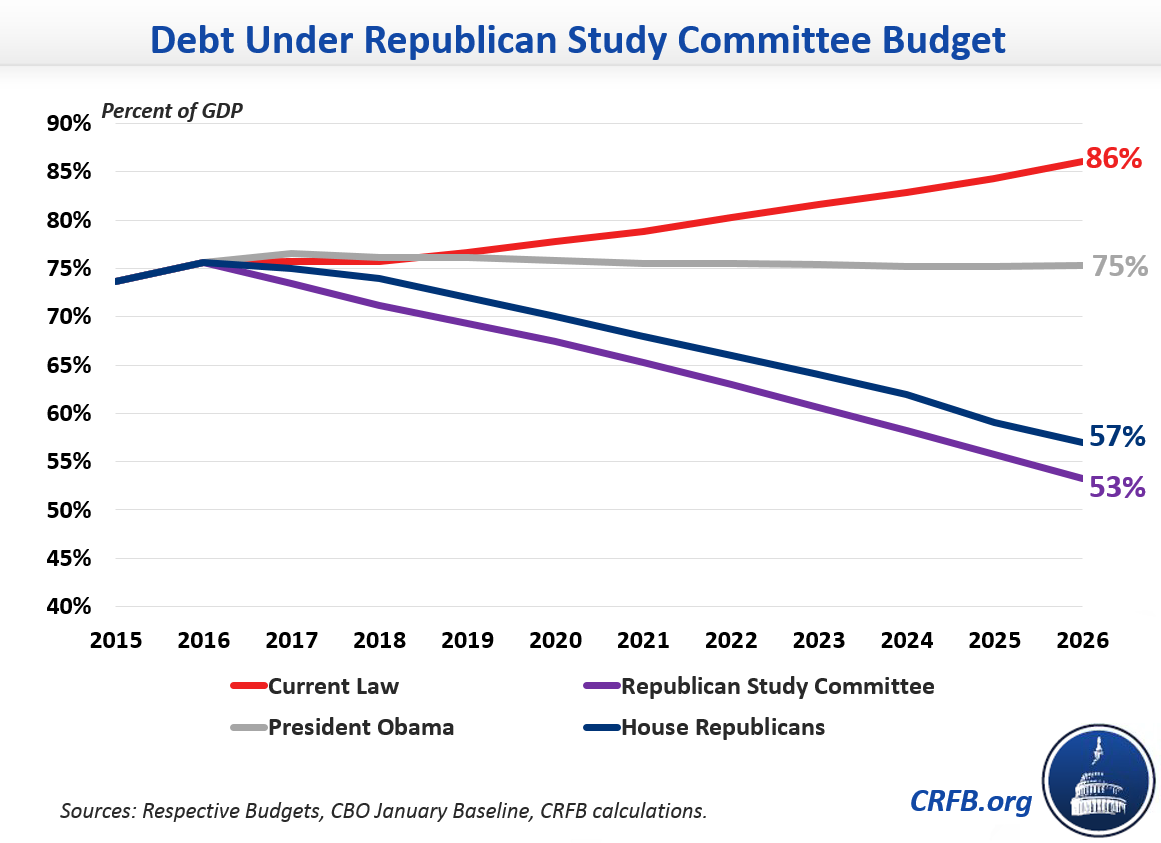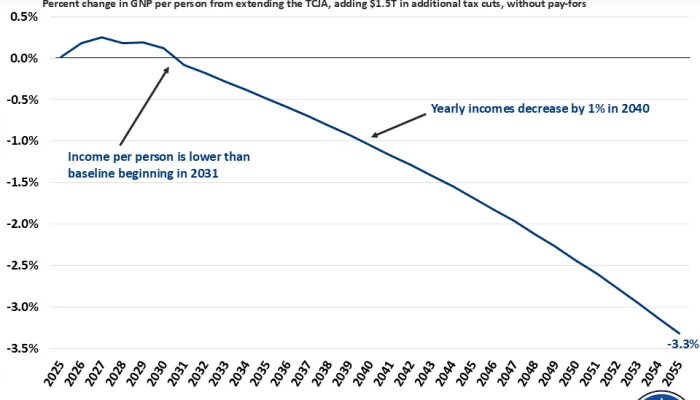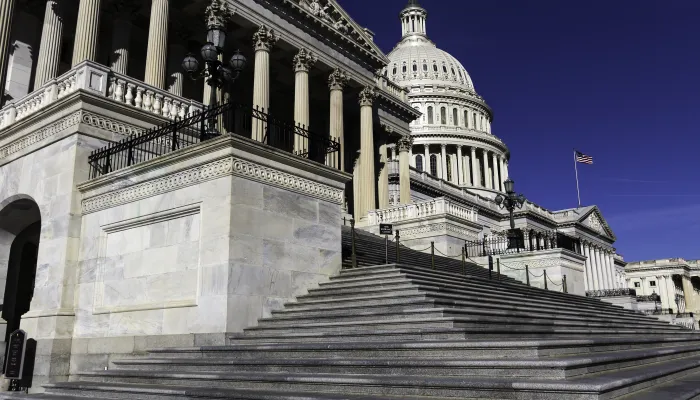Republican Study Committee Publishes Alternative FY 2017 Budget
The Republican Study Committee (RSC) has released an alternative to the House Republican budget that outlines their vision for the country’s fiscal future. Their plan aims to balance the budget in eight years and reduce the ten-year deficit by $8.6 trillion. As a result, debt would decline faster than the House Republican budget, with debt at 53 percent of Gross Domestic Product (GDP) by the end of the next 10 years, down from 75 percent today.
By their own estimates, the plan would cut spending from 19.2 percent of GDP in 2017 to 17.9 percent by 2026. Revenues would remain at current law levels, remaining around 18 percent for most of the decade.
Tax Reform
The budget calls for the tax reform that drastically reduces tax rates. Their reform principles call for a top rate of 25 percent on ordinary income (down from 39.6 percent today), 25 percent on corporations (down from 35 percent today), and 15 percent on capital gains and dividends (down from 23.8 percent today). It would also repeal the estate tax, repeal the alternative minimum tax, allow tax-free universal savings accounts, exempt employees past the retirement age from payroll taxes, allow business investments to be fully written off in the first year (full expensing), and establish a territorial international system of taxation.
To pay for these tax cuts, the budget calls to "eliminate distortionary special interest giveaways, such as the Wind Production Tax Credit" as well as use dynamic scoring that accounts for the economic growth from tax reform.
However, the plan would need to include much more aggressive base broadening (e.g., eliminating tax breaks) than can be achieved by repealing narrow “special interest giveaways” if the tax plan is to be paid for, even with economic growth. For comparison's sake, this plan is somewhat similar to that proposed by former Gov. Bush (except with lower rates). However, Bush's plan also contained significant base broadening, such as the elimination of the state and local tax deduction, the deductibility of interest, and a reduction in many other corporate and individual breaks. Two estimates which incorporated aggressive economic growth assumptions found the plan would still cost between $1.6 and $2.1 trillion. This tax plan would need to include even more aggressive base broadening if it hopes to be revenue-neutral.
Discretionary Spending
The budget would cap normal discretionary spending at $974 billion in FY 2017, or nearly $100 billion less than the $1.07 trillion established in the Bipartisan Budget Act last year. Over ten years, the budget increases defense spending above sequester levels by $406 billion, $139 billion more than the House Republican budget. Non-defense discretionary spending would be decreased by $1.4 trillion more than sequester caps.
Against the Congressional Budget Office's (CBO) current law baseline, these discretionary changes save $1.8 trillion over 10 years.
Health Care
The RSC budget fully repeals the Affordable Care Act and replaces it with the RSC’s American Health Care Reform Act, which provides a deduction for purchasing health insurance, an expansion of Health Savings Accounts (HSAs), tort reform, and other reforms. Like the House budget, the RSC budget block grants Medicaid and combines it with the Children's Health Insurance Program (CHIP). It also would convert Medicare to a premium support system starting in 2020 for new beneficiaries, increase means-testing, and raise the Medicare retirement age to 67 starting in 2025.
Social Security
Similar to last year's RSC budget, this year's would address some of the Social Security shortfall by adopting the more-accurate chained Consumer Price Index (CPI) for annual cost-of-living-adjustments (COLAs) and gradually raising the retirement age to 70. The budget would also reduce benefits for wealthy earners while maintaining benefits for those who earned less during their careers.
Social Security Disability Insurance (SSDI), due to become insolvent in 2022, would see reforms under the budget to encourage more work and workplace incentives. The budget cited the work of the McCrery-Pomeroy SSDI Solutions Initiative as a source of ideas to improve the SSDI program. The budget would also require beneficiaries to have worked more recently, create a new time-limited benefit for those where medical improvement is expected, update eligibility requirements, prevent double-dipping between SSDI and unemployment insurance (as the President proposed in his budget), fund anti-fraud reviews, and reform the appeal process.
| Policy Changes in the RSC Budget | |
| Policy | 2017-2026 Savings |
| End Affordable Care Act Exchange Subsidies | $925 billion |
| Discretionary Spending | $1,837 billion |
| Medicaid/CHIP/Other Health Care | $1,636 billion |
| Other Mandatory Spending | $2,171 billion |
| Medicare | $662 billion |
| Social Security | $261 billion |
| Net Interest | $1,146 billion |
| Total Savings | $8.6 trillion |
Source: Republican Study Committee
The RSC budget aggressively tackles the debt, including very steep cuts in spending to balance the budget after eight years, although traditional scoring would likely also show revenue losses from a large tax cut.
You can read more about our coverage of the 2017 budget process here.
Update 3/25/16: This blog was updated after posting to correct the debt figure for 2026, which was miscalculated in both the text and graph.



